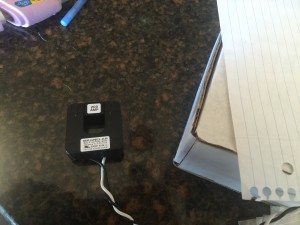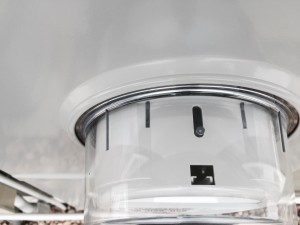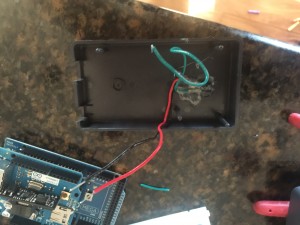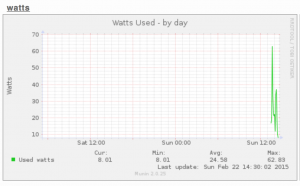I have for awhile been wanting to be able to figure out how much power my meter was using daily, without reading the meter at the same time everyday, I also want to be able to graph my power usage.
While I haven’t completely solved the issue with an ip67 box, I have proven the concept. I have been doing a lot of research on power meters on your house, how they work, and how they calculate the kw/h consumtion of your house, through all of this I learned that there are meters that broadcast there signal, this can be intercepted, I knew that mine didn’t have that because the meter reader still comes to check the meter, plus I live in the country. The next type of meter was a meter that had a flashing LED that flashed whenever a kw/h was used, that could have been useful, except for the fact that my meter didn’t have that :-(. The last type I found was a meter that did infrared pulses for every watt hour, this was my last hope, before I had to breakout the clamp!
I really didn’t want to open my breaker boxes and clamp these on the feeds. Plus the circuit for that is complicated.
So while I was on the road to Des Moines earlier this weekend, I had my wife snap a shot of the top of the meter… And there is was…
That little circuit had to be the IR transmitter. But what was the center channel??? While in Des Moines I took a look at my sisters meter as well (That’s right I am sure I am a super creeper).. Surprisingly her meter was the same as mine, I had guessed that she would probably have the wireless kind, since she lives in a more heavily populated area. Not a single document I read told me what the center channel was, then I got to thinking why do I care what the center channel is?!?!? All I cared about was the pulses, center channel didn’t matter. So when I got home on Saturday I went to work. First hack into a broken DVD player and grab a infrared receiver.
Hello Mr Harmon Kardon DVD player:
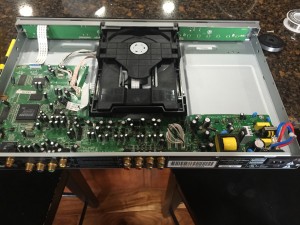
Look at what you have for me (IC61):
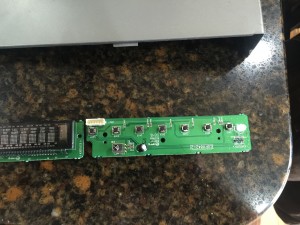
This… This is not relevant, but it looks interesting so I am pulling it too while I am in here.
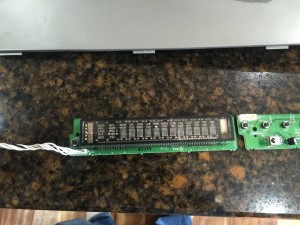
ok so now I had my IR, I could NOT find any data on the listed serial number.. Bummer, but it was 3 wire, So what was I to do?? How about make an educated guess, I know the TSOP is a very popular IR, so I just assumed that the wires were the same. (http://www.vishay.com/docs/82459/tsop48.pdf) and I was right, so I wired it to an Arduino, with an LED for testing.
Good things happened! (The Frozen Music is free too)
I then added the Ethernet shield.
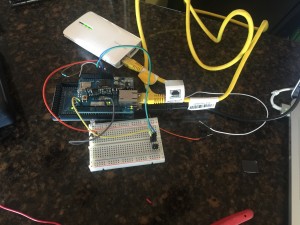
Then tragedy struck… I was using an interrupt to watch for IR, but the shield interfered with the interrupt. So I switched to a poller, and that seemed to work well (code to follow).
So then I needed to case it, The only Ethernet shield that I had only supported POE, this was cool, yet bad because it wouldn’t fit in the case… Oh well, proof of concept. I needed to hot glue the light in.
Mad hot glue skills I know.
I then discovered that light seemed to affect the IR sensor. So I needed to block all right from the receiver. I had my wife do a little sewing on a piece of material that I could pull around the meter. The result looks like this:
Lastly I needed to graph the data…. Munin seems perfect for this…
I ran the dryer to show it spike up…
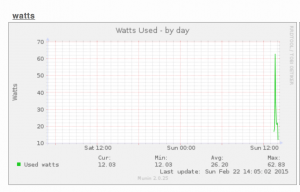
Here is showing it in live log mode..
Good project with great results!!!
Have Fun!
John “Make Your House Smarter” Hass
